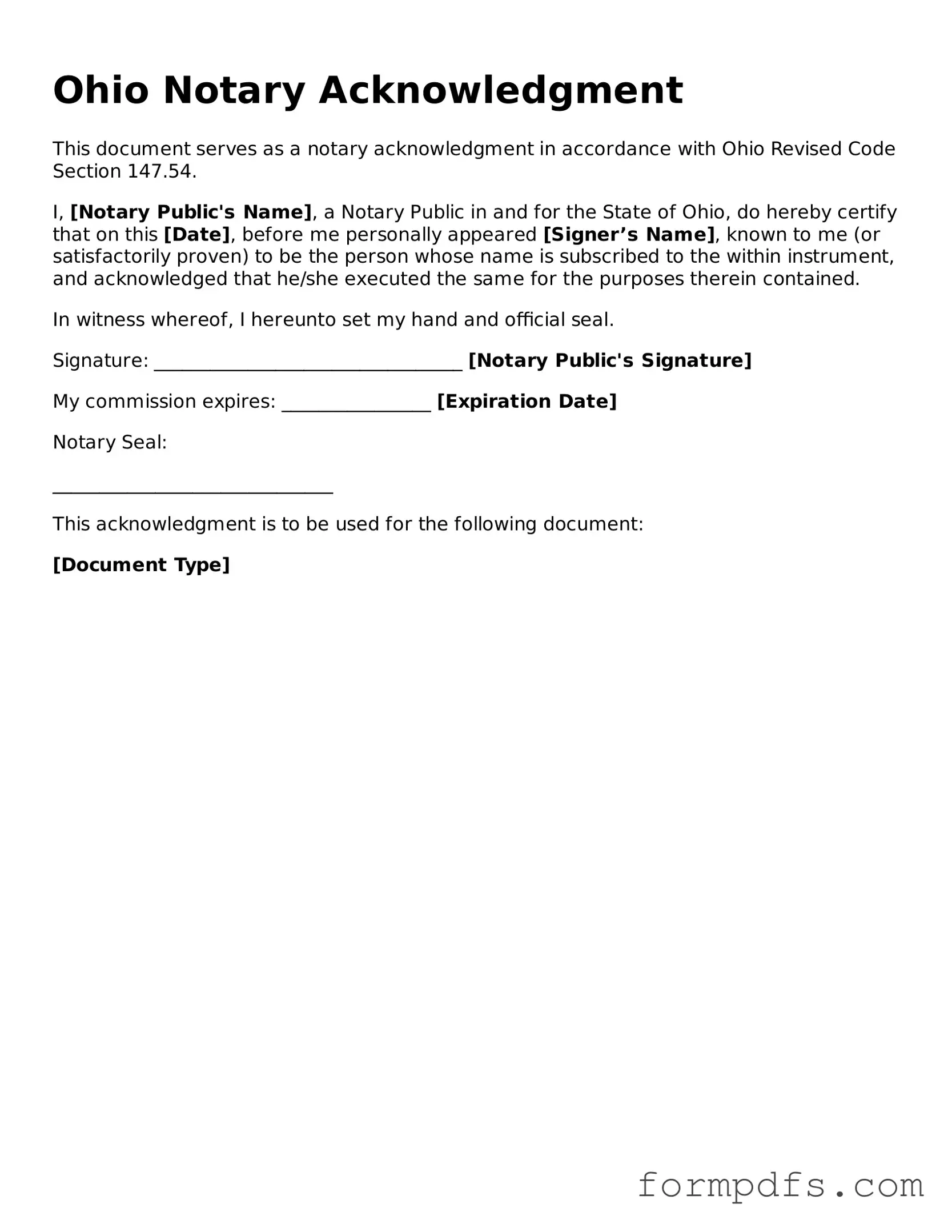What is an Ohio Notary Acknowledgement form?
The Ohio Notary Acknowledgement form is a document that verifies the identity of a signer and confirms that they willingly signed a document. It is commonly used for various legal documents, including contracts and deeds, to ensure authenticity and prevent fraud.
Who can act as a notary in Ohio?
In Ohio, notaries public must be at least 18 years old, residents of the state, and have completed the required training and application process. They are appointed by the Secretary of State and have the authority to perform notarial acts, including acknowledgments.
When is a Notary Acknowledgement required?
A Notary Acknowledgement is often required for documents that need to be recorded, such as real estate transactions, powers of attorney, and certain legal filings. If a document will be submitted to a court or government agency, an acknowledgment may be necessary to validate the signing process.
What information is included in an Ohio Notary Acknowledgement?
The form typically includes the name of the signer, the date of the acknowledgment, the notary’s signature, and their seal. It may also contain details about the document being acknowledged, ensuring clarity and proper identification.
How do I complete an Ohio Notary Acknowledgement form?
To complete the form, the signer must appear before the notary and provide valid identification. The notary will then fill out the acknowledgment section, confirming the identity of the signer and their willingness to sign the document. The notary will also apply their seal and signature.
Can a notary refuse to acknowledge a signature?
Yes, a notary can refuse to acknowledge a signature if they have doubts about the signer's identity, if the signer appears under duress, or if the document is incomplete. It is essential for the notary to ensure that all conditions for a valid acknowledgment are met.
Is there a fee for notarization in Ohio?
Yes, Ohio law allows notaries to charge a fee for their services. The maximum fee for an acknowledgment is typically set by the state. It is advisable to confirm the fee with the notary beforehand to avoid any surprises.
